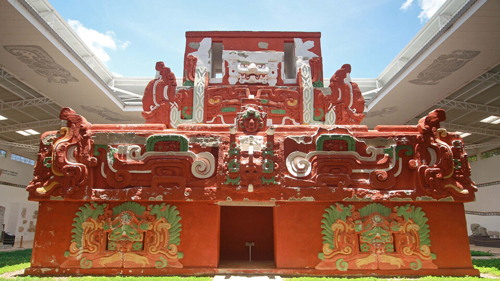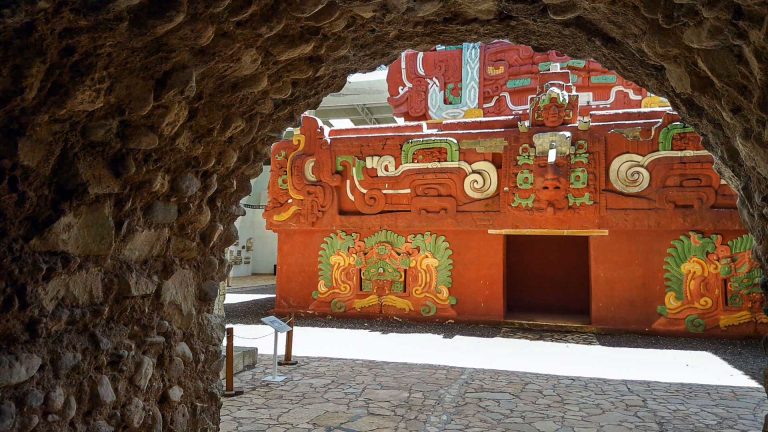Rosalila Rescue
Investigation and Consolidation of Temple 10L-16 and Rosalila
(1990-1997)
Discovering Rosalila
On June 23, 1989, Honduran archaeologist Ricardo Agurcia Fasquelle (currently President of the Asociación Copán) discovered a unique and extraordinary temple. While exploring under Temple 16, he found the best-preserved example of monumental architecture at Copán. He named the structure “Rosalila” (rose/lilac), following a nomenclature system established in the Tikal Project.
Rosalila was not destroyed by the ancient Mayans like other buildings that archaeologists have found. It was buried with great care and with much ceremony. Its rooms, moldings, and niches were carefully filled with mud and stones, while its stucco-worked panels were covered with a thick layer of white mortar. This mortar even protected the many layers of Rosalila’s original paint.
Rosalila Facts and Figures
Rosalila is 12.9 meters tall and has three stories. The upper two levels serve as a gigantic pre-Columbian billboard that displays complex Early Classic religious artwork. The lowest level is made up of four long and narrow rooms, and only by crossing the first three can one reach the central and most interior room. Within these sacred spaces, Mayans performed important ceremonies. As they buried Rosalila the Mayans placed beautiful offerings in these rooms.
The base of the building measures 18.5 by 12.5 meters and the main facade faces west. The temple is located on a terraced pyramid three meters high, baptized as “Azul”. Compared to other pyramids in Copán, Azul is small, since in general they can be up to 20 meters high. Like other temples built on the central axis of the Acropolis, the main stands are to the west, the direction that the Mayans associated with the entrance to the other world, the world of the dead, and the place where the sun died daily. There are seven steps in the main grandstand and the fifth step has a hieroglyphic date of dedication: February 21, AD 571. This date is near the end of the reign of Luna Jaguar, the tenth ruler of Copán.
Rosalila’s role
The internal walls of the temple were covered with soot, a consequence of the activity of burning incense and using torches, something similar to the walls of many old churches. Inside the temple there were numerous artifacts reflecting ancient religious practices. Agurcia found seven clay censers with charcoal still inside. Two of these were on stone-carved jaguar pedestals. He also found offerings of flint knives (for sacrifices), nine elaborate flint eccentrics (ceremonial scepters) wrapped in remnants of a deep blue cloth bag. There was also carved jade jewelry, sea shells, sting ray needles barbs (piercers for bleeding rites), shark vertebrae, jaguar nails, and remnants of flower petals and pine needles. Some of these remains (particularly the censers and flowers) bring to mind religious practices still in use among the modern Maya.
Rosalila was the main religious sanctuary in Copán in the late 6th century AD. It is the most complete preserved sample of Mayan art and architecture from this period ever found. Just as the cover of an illustrated manuscript may appear, the facades of this building are elaborately decorated with complex religious messages. The themes are cosmological and emphasize the Sun God, K’inich Ahau — the divine patron of the Mayan kings and the spiritual namesake of the dynasty’s founder, K’inich Yax K’uk Mo ’.






















